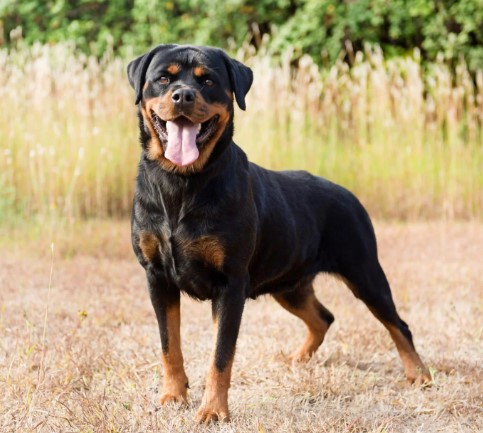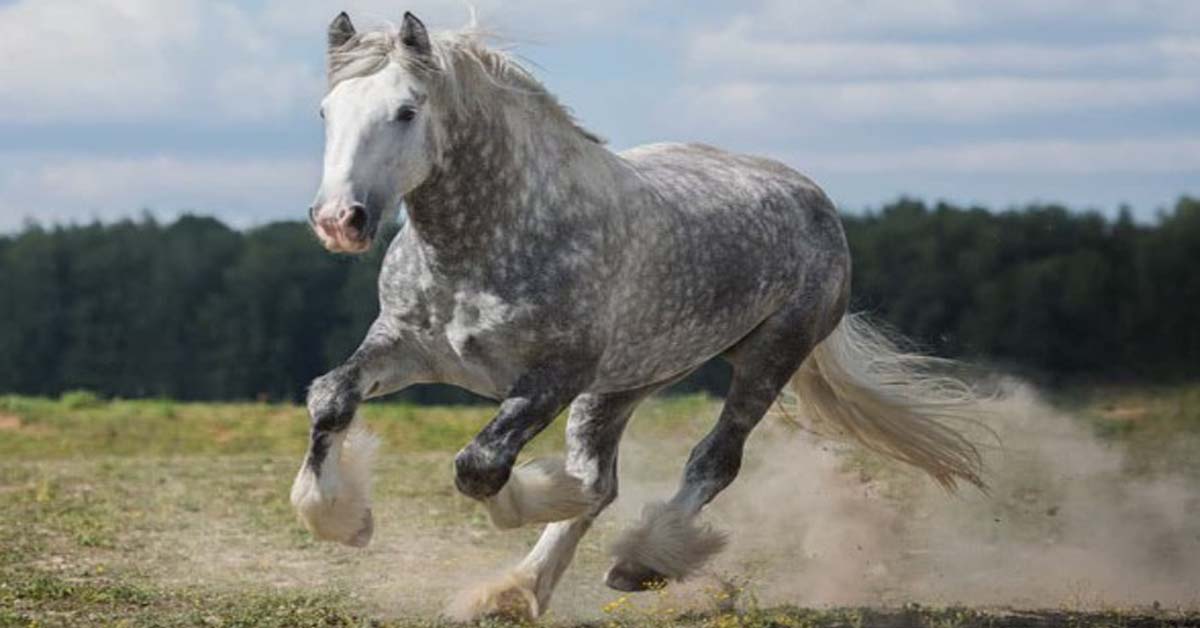The Balinese Cat, characterized by its long-haired coat, exhibits Siamese-style point coloration and captivating sapphire-blue eyes. Referred to as the purebred long-haired Siamese, this feline originated as a natural mutation within the Siamese breed. Essentially, the Balinese shares the same characteristics as its short-haired counterpart but boasts a medium-length silky coat and a distinctive plumed tail.
Just like their short-haired relatives, there is a genetic differentiation between traditional or “old-style” and modern body types. In the American Standard, color variants originating from the Colorpoint Shorthair are recognized as a distinct breed, referred to as Javanese.
Interestingly, despite their names, there isn’t a direct association between these cats and the Indonesian islands of Bali and Java. This nomenclature is merely a historical reference to their origins.
Similar to their Siamese forebears, Balinese cats are known for being sociable, vocal, playful, curious, and intelligent.
Balinese Cat Breed Overview & Balinese Cat Lifespan
| WEIGHT: 6 to 11 pounds |
| LENGTH: About a foot and a half long |
| COAT: Long |
| COAT COLOR: Creamy white body with a variety of possible color points on the face, ears, legs, and tails |
| Lifespan: 12 to 20 years |
| EYE COLOR: Deep, vivid blue |

Origin Of Balinese Cat
The Balinese cat essentially evolved from long-haired Siamese cats that carried a mutant gene for extended fur. It’s important to differentiate it from the Colorpoint Longhair, which is a Persian Longhair featuring Colorpoint markings.
The breed’s history traces back to the early 20th century when breeders, particularly Marian Dorsey of California, began intentionally breeding long-haired kittens, initially giving them away after World War II. Originally called Longhaired Siamese, objections arose from the Siamese community due to the name’s similarity. Consequently, ‘Balinese’ was proposed, inspired by the cats’ graceful resemblance to Far Eastern temple dancers.
Formal recognition for Balinese cats occurred in the United States in 1961, with their introduction to Europe taking place in the mid-1970s. The breed achieved recognition and championship status in the U.S. in 1986.
Balinese Cat Breed Characteristics
| Adaptability: 5 Points | Energy Level: 5 Points | Shedding Level: 3 Points |
| Affection Level: 5 Points | Grooming: 3 Points | Social Needs: 5 Points |
| Child Friendly: 4 Points | Health Issues: 3 Points | Stranger Friendly: 5 Points |
| Intelligence: 5 Points | Dog Friendly: 5 Points |
Balinese Development and History
The term “Balinese” does not derive from Bali or any part of Indonesia. Instead, its roots trace back to the first Siamese cats brought to the United States from Thailand in the mid-1800s, some of which carried the gene for long hair. This genetic trait became the foundation for deliberate breeding efforts that ultimately led to the development of the Balinese breed.
Initially, the presence of an occasional long-haired kitten in Siamese litters was considered a bloodline defect, and such kittens were only sold as pets. Historical records from the early 1900s indicate the existence of these cats, and the “long-haired Siamese” was officially registered as a show cat in 1928 with the American Cat Fanciers Federation.
In the mid-1950s, serious attempts were made by breeders in the United States to establish the long-haired variety as a distinct breed. To avoid the unwieldiness of the term “long-haired Siamese,” early breeder Helen Smith chose the name “Balinese,” drawing inspiration from the graceful movements of Balinese dancers.
Sylvia Holland
In the 1960s and 1970s, Sylvia Holland, a breeder and illustrator for Walt Disney Studios, played a crucial role in solidifying the breed standard for Balinese cats. Her criteria for authentic Balinese included cats exhibiting the classic Siamese points in seal, chocolate, blue, and lilac. She was selective, refusing to acknowledge others as true Balinese, suspecting possible crosses with different breeds.
During the same period, the American Cat Fanciers Association officially categorized new colors and patterns in Siamese, such as red, cream, lynx (tabby), and tortoiseshell points, as separate breeds—Colorpoint Shorthair and Longhair. Derived from these, the Javanese breed was established, in line with an Indonesian island theme.
Similar to their Siamese ancestors, Balinese cats gradually diverged into two distinct varieties based on physical characteristics. The traditional Siamese type, prevalent during the establishment of Balinese, was integral to its development. These old-style Balinese retained the look of early breeding programs.
However, as the popularity of short-haired Siamese increased, a preference emerged for a more elongated, slender type with a wedge-shaped head. The modern Balinese lineage directly descended from this evolving Siamese ideal.
By the mid-1980s, the old-style Balinese, like their Siamese counterparts, faded from most cat shows, with only a few breeders preserving the original Balinese type. Consequently, the two Balinese varieties have limited, if any, recent common ancestors.
Balinese Cat Appearance
The Balinese cat can be described as a Siamese with an ample, silky coat. This medium to long fur is resistant to matting, lying close to the body and accentuating its slender physique. The coat’s base is white or cream, with color points in the classic Siamese hues: blue, chocolate, seal, and lilac. The tails of Balinese cats are either plumed or stiff, matching the coloration of their distinctive points.
In terms of physique, Balinese cats are agile and gracefully built, featuring strong hind legs that enable impressive jumping abilities. They boast tidy, oval-shaped paws and wedge-shaped heads. Their large ears are positioned at a distance, maintaining the overall wedge shape of the head. Almond-shaped and brilliantly clear, the sapphire eyes of Balinese cats contribute to their captivating appearance.
Balinese Cat Personality
Due to their close relationship, Balinese and Siamese cats share numerous characteristics. Much like their Siamese counterparts, Balinese cats are characterized by curiosity, outgoing behavior, and intelligence, displaying excellent communication skills. Renowned for their talkative nature, they eagerly express their perspectives on life, love, and even the menu you’ve presented them for dinner.
Engaging in monologues is not uncommon for them, making them less suitable for those who believe cats should remain silent. Balinese cats often tune into your mood, offering companionship to lift your spirits during moments of sadness or sharing in your joy during times of happiness.
These felines are vocal themselves, responsive to your tone of voice, and can be sensitive to a scolding tone. For effective correction of unwanted behavior, a coaching tone and positive reinforcement prove more successful. Agile and athletic, Balinese cats may perch on the shoulders of willing family members if permitted. They enjoy playful activities, quickly learning to fetch and delighting in entertaining antics.
Despite their assertiveness in seeking attention, Balinese cats possess a loving and devoted nature. They take pride in their heritage, representing both the Balinese and Siamese breeds.

Balinese Cat Temperament
When you bring a Balinese into your home, you’re essentially welcoming a Siamese cat in every aspect except the coat. This means you’re gaining a devoted and affectionate companion with a penchant for being close to their human counterparts. Expect your Balinese to follow you from room to room, engaging in meaningful conversations along the way.
Dr. Lynn Kaufman from Prairie View Animal Hospital in Grimes, Iowa, notes, “They have very similar traits because they have such a close ancestry.” If you’re not prepared for a cat that insists on having the last word, whether Siamese or Balinese, may not be the ideal choice.
While Balinese cats share the vocal tendencies of their Siamese relatives, they often exhibit a softer tone, making them more endearing to roommates or those in close living quarters. As intelligent and affectionate felines, Balinese cats observe your every move, shadowing you throughout the house. Their clever minds allow them to learn tricks and engage in playful activities, demanding the attention they rightfully deserve.
According to Dr. Cheryl Bonk of Pat Keen, Balinese cats may impose demands on your time and express their needs vocally if they feel neglected. Simply feeding and cleaning them won’t suffice; these feline companions will expect more interaction and engagement from their human companions.
Balinese Cat Health
Considered a generally healthy breed, the Balinese do encounter a few health concerns. Being a pedigree breed, they originated from a limited gene pool of Siamese cats with the long hair mutation, heightening the risk of inheriting various unknown health issues.
One confirmed ailment for Balinese cats is Progressive Retinal Atrophy (PRA), a condition involving the degeneration of the retina, potentially leading to impaired vision. Dilated cardiomyopathy, causing the enlargement of the heart muscle and reducing its function, has been reported in some Balinese cases. On a positive note, there are assertions that they might be at a lower risk for hypertrophic cardiomyopathy (HCM).
Liver amyloidosis, or systemic amyloidosis, is another potential health concern, eventually leading to organ failure, primarily affecting the liver. Since Balinese cats are a mutation from the Siamese, and the latter may have hereditary disorders, there is a possibility of a genetic link.
Occasionally, Balinese cats may exhibit a rare inheritance that causes their blue almond-shaped eyes to appear cross-eyed, a condition known as strabismus. This occurrence is more common in the Siamese cat breed from which the Balinese originated.

Common Health Problems
- Eye problems (progressive retinal atrophy is one of the most common health conditions seen in Balinese. They may also be prone to cross-eyes (although these are often outbred) and glaucoma)
- Liver amyloidosis (this involves the accumulation of amyloid protein in the liver, and this reduces function and can lead to liver failure)
- Respiratory problems (usually asthma or bronchial disease/infection)
- Neurological problems (hyperesthesia syndrome which causes excessive grooming and licking, and nystagmus which results in rapid eye movements)
- Heart problems (including dilated cardiomyopathy)
Balinese Cat Care
Balinese cats are typically lively, intelligent, affectionate, and notably sociable, falling into the category of medium-sized felines. They thrive on playfulness and exhibit a natural curiosity, emphasizing the need for a well-stocked assortment of toys, scratching posts, and enrichment activities to keep them engaged and enthused.
Their inherent cleverness makes them highly trainable through positive reinforcement methods, and their charming antics sometimes earn them the endearing label of “clowns.” Balinese cats have a strong desire for companionship and may experience distress if left alone for extended periods, potentially leading to undesirable behavior. With proper introductions, they integrate well into households with children, dogs, and other pets, making them a favored choice as a family cat.
These cats appreciate elevated vantage points, so maintaining clean surfaces and providing suitable hiding spots ensures they find peace when needed, preserving your home decor. While not the ideal choice for those seeking a tranquil environment, Balinese cats are known for their vocal tendencies, engaging in lively conversations and demanding attention. They are generally considered somewhat quieter than their Siamese counterparts.
Sporting medium-length, silky coats, Balinese cats undergo seasonal shedding but require minimal maintenance due to the absence of an undercoat. Their coats are less prone to tangles or mats, necessitating just a weekly brushing to keep them in optimal condition.
Balinese Cat Colors
Balinese cats exhibit a variety of colors in their coat. Typically, the primary portion is a creamy white hue, complemented by distinct color patches on the face, ears, full tail, and legs. Seal, chocolate, blue, and lilac are the most prevalent colors, recognized as the four officially accepted standards for the breed. Additionally, some Balinese cats may display dots in red, lynx, or tortoiseshell shades.
Boasting bright blue eyes, prominent ears, impressive plumed tails, and muscular bodies, Balinese cats are strikingly handsome and agile creatures. Their larger ears may necessitate a bit more attention for cleaning compared to some other cat breeds.
While some enthusiasts claim that Balinese cats are hypoallergenic, there is no scientific basis for this assertion. The absence of an undercoat in Balinese cats does result in reduced shedding, potentially lessening the likelihood of an allergic reaction. However, it is not a guaranteed solution.
Balinese Cat Feeding & Grooming
Feeding: The Balinese, being an active cat, will typically need around 80 kcal of food daily. These cats are known for not overeating, signaling their dietary needs promptly.
Grooming: Maintaining the Balinese’s beautiful coat and preventing knots and tangles requires regular grooming, although it’s a somewhat less demanding task compared to other long-haired breeds, thanks to the Balinese’s fine coat. Employing a brush and comb is essential.
It’s advisable to initiate grooming when the cat is a young kitten, before the full coat develops, allowing the cat to become accustomed to the process, as some cats may resist. Consistent and frequent grooming helps prevent the formation of tangles, making the task more manageable.
Adopt or Buy a Balinese Cat || Balinese cat for adoption
If you are open to listening and working with Balinese, you will find that they are a very loving and attractive cat breed. You’ll have lots of funny stories and adorable pictures to share!
- Progressive Retinal Atrophy In The Cat | VCA Animal Hospitals
- Feline Glaucoma | Cornell University College of Veterinary Medicine
- Petfinder
- Adopt a Pet
Fun Facts About Balinese Cat
- The name “Balinese” was chosen to distinguish the breed from its Siamese ancestors and because the cat’s graceful body and long, silky coats reminded breeder Helen Smith of a Balinese dancer.
- The Balinese is classified as a rare breed and ranks 35th in popularity out of 41 breeds recognized by the Cat Fanciers Association.
- To ensure the compatibility of their bloodlines, only registered, purebred Siamese were allowed into the Balinese breeding program.
More Cat Breeds And Further Research
Balinese Cat Breed Review
Balinese Cat Breed FAQs
How rare is a Balinese cat?
The Balinese is classified as a rare breed and ranks 35th in popularity out of 41 breeds recognized by the Cat Fanciers Association. To ensure the compatibility of their bloodlines, only registered, purebred Siamese were allowed into the Balinese breeding program.
Why Balinese cats are the best?
Personality and temperament
This breed is considered the most intelligent of the cat breeds and is also notable for its good humor, good nature, and high energy. Being good to both animals and people is one of the strongest qualities the Balinese possess.
Do all Balinese cats have blue eyes?
Balinese. Balinese is a pointed cat breed whose eyes are always deep blue. The long coats of these strikingly beautiful cats resulted from a spontaneous genetic mutation in purebred Siamese cats. These medium-sized cats are not just pretty faces.
What colors do Balinese cats come in?
The Cat Fanciers’ Federation and most other organizations around the world accept the Balinese breed in the seal, blue, chocolate, lilac, red, and cream points in addition to tortoise and lynx points in all these colors.











